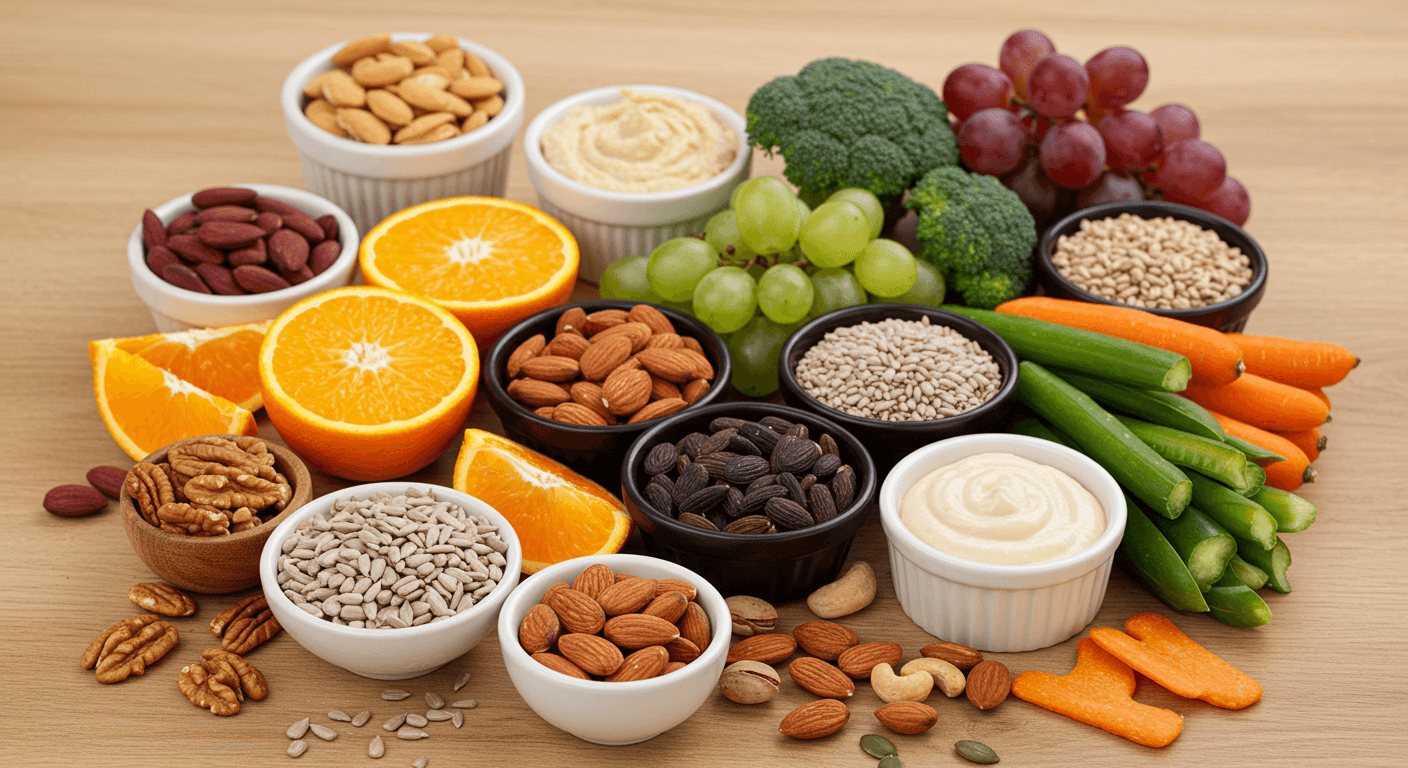Please Note: This post may contain affiliate links. If you click one of them, we may receive a commission at no extra cost to you. As an Amazon Associate, I earn from qualifying purchases.
Imagine, if you will, a world where dinosaurs roamed free, munching on leaves and ferns without a care in the world. These gentle giants had it all figured out when it came to eating—big portions of wholesome plant matter that fueled their massive bodies.
So why not take a page from their book? By embracing dino-sized portions of nutritious foods, we can embark on our own weight loss journey with the grace of a Brachiosaurus and the determination of a Triceratops.
Top Takeaways and Key Concepts
- Prioritize Plant-Based Foods: Fill plates with fruits, vegetables, grains, and legumes for low-calorie, fiber-rich meals.
- Practice Mindful Eating: Eat slowly, savor flavors, and remove distractions to prevent overeating.
- Prep Dino-Sized Recipes: Make large batches of veggie stir-fries, smoothie bowls, or soups for convenience.
- Use Balanced Portioning: Fill half your plate with vegetables, and divide remaining space for grains and protein.
- Stay Motivated and Engaged: Set achievable goals, celebrate victories, and involve supportive friends or communities.
Article Summary
The article encourages adopting a herbivore-inspired, plant-based approach to healthy eating for weight management. Key strategies include prioritizing fruits, vegetables, grains, and legumes, while using mindful eating to slow consumption and recognize fullness cues. Preparing large, nutrient-rich meals in advance ensures convenience and adherence, while balanced portioning keeps calorie intake under control. Motivation is emphasized through setting small goals, celebrating progress, and engaging with supportive communities. Overall, combining plant-forward nutrition, mindful habits, and sustained motivation creates a sustainable path toward long-term health.
Video Summary
The Power of Plants: Why Herbivores Have It Right

Let’s kick things off by diving into the main ingredient in our herbivorous diet: plants! Honestly, have you ever looked at a salad and thought, “This could use more dinosaur”?
Well, maybe not in those exact words, but there’s something undeniably appealing about filling your plate with vibrant greens and colorful veggies.
Eating like a herbivore means prioritizing fruits, vegetables, grains, and legumes—all packed with vitamins and minerals that keep us feeling energized.
You might wonder why this matters for weight loss. To be fair, herbivores consume vast amounts of food while maintaining lean physiques. They’re able to eat large volumes because plant-based foods are typically low in calories but high in fiber.
Fiber is essential; it keeps our digestive systems running smoothly while also helping us feel full longer. Imagine chomping down on crunchy carrots or juicy cucumbers—those bites provide satisfaction without packing on extra pounds!
Interestingly enough, incorporating more plants into your meals doesn’t mean you have to give up flavor. Let’s see how creative we can get!
Think about roasting sweet potatoes with spices or whipping up zesty salads loaded with various toppings like nuts and seeds. You’ll find that eating healthy can actually be an adventure for your taste buds!
And speaking of adventures, let’s not forget about portion sizes! Just because we’re channeling our inner dinosaur doesn’t mean we should pile everything onto our plates haphazardly.
Instead, focus on balanced meals—half your plate should be filled with vegetables or fruits while leaving room for whole grains and proteins. This way, you’ll enjoy generous servings without going overboard.
Mindful Munching: Embracing the Herbivore Lifestyle
Now that we've established what it means to eat like an herbivore let's talk about how to embrace this lifestyle fully through mindful munching.
Picture yourself as one of those majestic creatures grazing peacefully in a sunlit meadow—not rushing through meals but taking time to savor every bite.
By practicing mindfulness during meals, we allow ourselves to truly enjoy what we're eating rather than just shoveling food into our mouths while scrolling through social media (guilty!).
Try putting away distractions during mealtime; instead of watching TV or checking emails at the table, focus entirely on your meal's flavors and textures.
Interestingly enough, studies show that people who eat mindfully tend to consume fewer calories overall because they recognize when they’re full sooner than those who don’t pay attention.
So next time you're enjoying some delicious roasted veggies or fresh fruit salad—pause between bites! Take note of how amazing these flavors are before reaching for seconds.
On the other hand, let’s consider snacking habits too! Herbivores nibble throughout the day rather than bingeing all at once—which can lead us down slippery slopes toward overeating later on.
Stock up on healthy snacks like sliced bell peppers or apple slices paired with nut butter so you always have satisfying options ready when hunger strikes.
Dino-Sized Recipes: Crafting Your Plant-Powered Meals
Okay folks—let's get cooking! What good is this dino-sized eating strategy if we don't know what delicious meals await us? Crafting herbivore-friendly recipes may sound daunting initially; however—as I discovered—it can actually be quite fun!
Start simple by creating big-batch dishes such as vegetable stir-fries loaded with colorful produce tossed together with savory sauces made from soy sauce or ginger dressing (yum!). Not only do these meals taste fantastic; they also make excellent leftovers for lunch boxes later in the week.
As another idea worth trying out: smoothie bowls! Blend together frozen bananas along with leafy greens (yes!) then top them off generously using fresh fruits like berries plus crunchy granola bits sprinkled across—the result is visually stunning AND nourishing—a win-win situation indeed!
Don’t forget soups either; hearty lentil soup brimming with carrots and celery makes for cozy comfort food during chilly days ahead (and did I mention it's incredibly easy?).
When preparing larger quantities upfront means less stress around meal times later—you'll thank yourself after long workdays when dinner magically appears right before your eyes!
Building Your Plate: Portion Control Dinosaur Style
Here comes perhaps one of my favorite topics—how do we build those dino-sized portions correctly? It's essential not just to load up plates indiscriminately but rather create balanced combinations that leave us satisfied without leading straight into food comas afterward!
A helpful guideline involves dividing plates visually into sections based upon various food groups mentioned earlier: half filled primarily using non-starchy vegetables followed by smaller amounts dedicated towards whole grains plus lean protein sources (beans anyone?).
This approach ensures proper nutrition intake throughout each meal while still allowing ample opportunity for indulging slightly here-and-there without guilt weighing heavily afterward!
Another technique worth noting relates back again towards mindful practices discussed previously regarding pacing oneself during consumption itself—you’ll likely find enjoyment increases tenfold simply due diligence taken slowing things down periodically throughout each course served up hot-off-the-stove too!
And lastly—don’t underestimate hydration's role either! Drinking plenty water helps regulate appetite levels alongside boosting metabolism rates too—it acts almost like having an invisible friend cheering you along every step taken forward towards achieving goals set forth earlier within this article today altogether…
Finding Your Inner Dinosaur: Staying Motivated
Now, let’s chat about motivation—the essential fuel for any successful weight-loss journey. Keeping your spirits high is crucial, especially when facing daily challenges that can make sticking to a diet feel like climbing a mountain.
Just like our dinosaur friends persevered through thick and thin, we too must find ways to stay inspired as we move forward in our health journey.
It’s important to remember that motivation doesn’t just come from willpower alone; it often springs from setting achievable goals and celebrating small victories along the way.
Whether it’s fitting into those jeans you’ve been eyeing or simply feeling more energetic, every little success counts! By focusing on progress rather than perfection, we can maintain enthusiasm even when the going gets tough.
By the way, surrounding yourself with supportive friends or joining a community of fellow herbivore enthusiasts can also work wonders for your motivation.
Sharing experiences and encouragement helps create an uplifting environment where everyone thrives together. It’s like having your very own herd of dinosaurs cheering you on!
And let’s not forget about mixing things up! Boredom can quickly derail even the most determined dieter. So why not experiment with new recipes or try out different workouts?
Keeping things fresh and exciting ensures that you’ll look forward to each meal and activity instead of viewing them as chores.
In summary, finding your inner dinosaur means embracing resilience, celebrating milestones, seeking support, and keeping things interesting. With these tools at your disposal, you'll be well-equipped to tackle any obstacles that come your way in this dino-sized adventure toward better health!
Here are some resources to help you dive deeper:
Herbivore Diet Basics
https://www.healthline.com/nutrition/herbivore-diet
The Benefits of Eating More Vegetables
https://www.eatright.org/health/wellness/preventing-illness/the-benefits-of-eating-more-vegetables
Mindful Eating Techniques
https://www.mindful.org/mindful-eating/
Frequently Asked Questions
How can eating plant-based meals support weight loss?
Plant-based foods are lower in calories and higher in fiber, helping you feel full while reducing calorie intake.
Why are larger portions of vegetables encouraged?
Vegetables are nutrient-dense and low in calories, so big servings provide volume, satisfaction, and vitamins without excess calories.
How does mindful eating help prevent overeating?
Mindful eating slows the pace of meals, allowing you to better notice fullness signals before eating more than needed.
Is meal prepping important to eating like an herbivore?
Meal prepping ensures nutritious plant-based meals are ready ahead of time, making it easier to stay consistent and avoid impulsive choices.
What is a simple way to portion balanced meals?
Fill half the plate with vegetables and divide the remaining half between grains and protein to maintain balance and fullness.
How does hydration support this eating approach?
Drinking water throughout the day prevents dehydration from being mistaken for hunger and helps regulate appetite.
How can motivation be maintained while eating this way?
Setting small goals, celebrating progress, and connecting with supportive communities helps keep the journey positive and sustainable.

Kevin Collier is a passionate nutritionist and wellness advocate dedicated to helping individuals achieve their health goals through balanced eating and sustainable lifestyle choices. With years of experience in the field, Kevin believes in the power of nutritious food to transform lives and specializes in creating articles about diet plans and achieving weight loss goals. When not writing for DietDino, Kevin enjoys exploring new recipes, staying active outdoors, and sharing tips on mindful living.




